#santiago amigorena
Explore tagged Tumblr posts
Text

the ghetto within, santiago amigorena (2022)
#uno de mis favoritos de 2022#santiago amigorena#le ghetto interieur#bookblr#books#book quotes#quotes#latin american literature#the lover speaks
4 notes
·
View notes
Text

ANOTHER SILENCE Asistente de arte
Director: Santiago Amigorena Productora: Rizoma Films
youtube
0 notes
Text
Hiam Abbass

Hiam Abbass, attrice, regista e sceneggiatrice palestinese, è nata in Israele e ha la cittadinanza francese.
È stata diretta da registi internazionali come Steven Spielberg, Amos Gitai, Tom McCarthy, Jim Jarmusch, Abbas Fahdel e altri ancora.
Nata a Nazareth, il 30 novembre 1960 da una famiglia di arabi musulmani, è cresciuta nel quartiere libanese del vicino villaggio di Deir Hanna. Dagli anni ’80 vive a Parigi dove è iniziata la sua carriera artistica.
Ha cominciato a recitare nel film per la tv La nuit miraculeuse del 1989, di Ariane Mnouchkine, seguito da apparizioni in diversi telefilm.
Al cinema ha debuttato nel 1989 con il film La nuit miraculeuse. È stata poi nel cast di Ognuno cerca il suo gatto, Haifa, Histoire naturelle, Venise est une femme, Le mariage en papier, Aime ton père, e Bab el Chams.
Il suo primo ruolo di successo è arrivato nel 2004 quando è stata la protagonista in La Sposa Siriana diretto da Eran Riklis che le è valso la candidatura per la miglior attrice agli European Film Awards.
L’anno successivo è apparsa nel film Munich di Steven Spielberg, in cui ha anche lavorato come consulente per il dialetto e la recitazione, vivendo per tre mesi in un hotel con attori israeliani e palestinesi che hanno avuto molte discussioni che hanno aiutato entrambe le parti ad avvicinarsi.
Ha recitato in diversi altri film prima del 2008, quando è stata la protagonista de Il giardino di limoni in cui interpreta una donna palestinese che lotta contro la decisione dei servizi segreti israeliani di sradicare il suo giardino perché avrebbe potuto essere usato dai terroristi per attentare alla vicina casa del Ministro della Difesa. Per questo ruolo ha ricevuto il premio Israeli Film Academy Award e l’Asia Pacific Screen Awards come miglior attrice.
Nel 2008 ha interpretato la madre di un immigrato siriano clandestino nel film The Visitor di Tom McCarthy e la madre di un soldato iracheno nel film Dawn of the World di Abbas Fahdel.
È stata nel cast del film I limiti del controllo di Jim Jarmusch e in A Bottle in the Gaza Sea, tratto dal romanzo Une bouteille dans la mer de Gaza di Valérie Zenatti.
Il regista Radu Mihaileanu l’ha invece voluta nella commedia drammatica La sorgente dell’amore.
Nel 2012, ha fatto parte della giuria del Festival di Cannes e debuttato alla regia con The Inheritance in cui affronta il tema dell’identità da diversi punti di vista, quello del ruolo femminile diviso tra modernità e tradizione e quello dell’appartenenza nazionale di una famiglia palestinese che vive in Galilea.
Nel 2017 ha interpretato Freysa, la leader del movimento per la libertà dei replicanti, in Blade Runner 2049.
È stata la protagonista femminile della serie tv Succession che ha ottenuto un enorme successo negli Stati Uniti.
Come acting coach è stata impegnata sul set di Alcuni giorni di settembre di Santiago Amigorena con Juliette Binoche, John Turturro e Nick Nolte e Babel di Alejandro Gonzáles Iñarritu con Brad Pitt e Cate Blanchett.
È stata accanto a Tim Roth in Come together, la storia di un terrorista che, a seguito di un grave incidente, perde la memoria dimenticando il suo passato e i suoi ideali sovversivi, per venire salvato da una medica siriana rifugiata che non conosce la sua vera identità.
In Bye Bye Tiberias, selezionato per rappresentare la Palestina agli Oscar 2024 e presentato in anteprima mondiale alle Giornate degli Autori del Festival del Cinema di Venezia, è stata diretta da sua figlia Lina Soualem. Nel film, che esplora le tradizioni orali di quattro generazioni di donne palestinesi, interpreta se stessa nel suo personale viaggio di ritorno al villaggio dove è cresciuta e da dove è partita per Parigi, quando aveva vent’anni, per intraprendere la carriera di attrice. Un ruolo che la spinge a mettere a nudo il suo passato, a guardare indietro a come la sua patria è cambiata e a riflettere su tutto ciò che ha ereditato da sua madre e dalla generazione che l’ha preceduta.
Hiam Abbass ha anche un’altra figlia, Mouna, anch’ella attrice, entrambe avute da Zinedine Soualem, noto attore franco-algerino, con una carriera trentennale nel cinema, nella TV e nel teatro francese.
0 notes
Text
Santiago Amigorena : “En Argentine, comme dans tant d’autres pays, la démocratie a failli”
Entretien avec Santiago Amigorena. L’écrivain franco-argentin nous a confié sa réaction face à l’élection de l’ultralibéral d’extrême-droite Javier Milei à la tête de l’Argentine. Santiago Amigorena Propos recueillis par Nelly Kaprièlian Que penses-tu de l’élection de Javier Milei en Argentine ? Peut-on penser quelque chose de ce qui n’a pas de sens ? De ce qui tente d’échapper, continuellement,…

View On WordPress
0 notes
Photo

Rise (En corps), Cédric Klapisch (2022)
#Cédric Klapisch#Santiago Amigorena#Marion Barbeau#Hofesh Shechter#Denis Podalydès#Muriel Robin#Pio Marmaï#François Civil#Souheila Yacoub#Mehdi Baki#Alexia Giordano#Mathilde Warnier#Alexis Kavyrchine#2022
16 notes
·
View notes
Photo

Santiago Amigorena
0 notes
Quote
Je me souviens qu’il était tout. Je me souviens qu’il était lui et qu’il était moi et que je n’étais plus rien. Et que c’était si bon de n’être plus rien.
Santiago H. Amigorena, Le ghetto intérieur
#Santiago H. Amigorena#Le ghetto intérieur#livre#livres#book#books#citation#citations#citation française#citation en français#littérature#littérature argentine#littérature française#literature#quote#quotes
75 notes
·
View notes
Text
Santiago Amigorena - Kein Ort ist fern genug
1928 verlässt Vicente Rosenberg seine Heimat Warschau Richtung Südamerika. In Buenos Aires gründet er mit Rosita eine Familie und eröffnet ein Möbelgeschäft. Sie bekommen drei Kinder und alles entwickelt sich prächtig in der lebendigen Stadt. Doch dann werden die Briefe der Mutter zunehmend besorgniserregend. Juden hatten es schon lange nicht mehr leicht, aber nun scheint sich die Lage doch zu verschlimmern. Während die Nazis in Europa die Endlösung vorbereiten, sitzt Vicente machtlos 12.000 Kilometer entfernt. Nachrichten erreichen ihn nur spärlich und verzögert, bald schon kann und will er diese nicht mehr ertragen und zieht sich zurück in sein inneres Ghetto. Wie die Mauer, die Warschau umschließt, verschließt er sich vor der Welt und seiner Familie. Fragen nach der Identität – was ist er: Pole, Argentinier, Jude? – und Schuld – hätte er mehr tun müssen, um seine Mutter zur Auswanderung zu bewegen, bevor es zu spät war? – plagen ihn bis er nur noch einen einzigen Ausweg für sich sieht.
Santiago Amigorena schildert die Geschichte seines Großvaters, seiner Familie, die Vertreibung auf beide Seiten des Atlantiks erlebt hat. Viele Sprachen fließen in seinen Adern, Vicente wächst mit dem Jiddischen auf, lernt dann Polnisch für die Schule, ist begeistert von der deutschen Sprache und Kultur und eigentlich sich dann das argentinische Spanisch an, sein Enkel muss später im französischen Exil erneut eine andere Sprache erlernen. Doch alle Sprachen der Welt können nicht das Entsetzen zum Ausdruck bringen, dass mit der Shoa verbunden ist und das am Beispiel Vicentes greifbar wird.
Es sind nur wenige Jahre, die Amigorena schildert, von Ende 1940 bis zum Waffenstillstand 1945, diese jedoch sind entscheidend für Vicente Rosenberg und machen aus dem lebendigen und energischen jungen Vater einen gebrochenen Mann. Der kurze Roman ist dicht und voller essentieller Fragen, die nachdenklich stimmen.
„Wie alle Juden hatte Vicente geglaubt, vieles zu sein, bis die Nazis ihm zeigten, dass ihn tatsächlich nur eines charakterisierte: sein Jüdischsein.“
Weder war er besonders religiös, noch war das Jiddische seine Alltagssprache, in verschiedenen Ländern und Sprachen zu Hause wurde plötzlich etwas zum Distinktionsmerkmal, das Hitler und seine Gefolgsleute brauchten, um sich selbst zu rechtfertigen. Die Definition des Ichs obliegt jetzt nicht mehr dem Individuum, sondern ihm wird zugeschrieben, was er/sie ist und trotz der Entfernung merkt auch Vicente, dass er sich zunehmend als Jude identifiziert und Mitglied der Leidensgemeinschaft wird, ohne jedoch unmittelbar selbst Leid zu erfahren.
Genau dieses treibt ihn in den emotionalen Ausnahmezustand. Er fühlt eine Schuld, fühlt sich als Verräter, denn er ist weit entfernt von der Gräuel, muss nicht erleben, was seine Familie und Freunde durchmachen müssen. Dabei verfügt er nur über wenig Belastbares, was das Ausmaß der Schandtaten angeht. Wie alle anderen ahnt er, dass unbegreifliche Dinge geschehen, aber erst nach der Befreiung wird die Welt begreifen und einen Begriff dafür finden, was die Nazis in Europa angerichtet haben. Doch das wenige Wissen reicht schon, um Vicente zur inneren Migration zu veranlassen und das Reden einzustellen. Nicht dass er nicht wollte, er kann nicht mehr. Das, was er durchlebt, ist sinnbildlich für das, was sich in den Lagern abspielte, und was nicht in Worte zu fassen ist.
Amigorenas Roman war nach Erscheinen 2019 für alle großen französischen Literaturpreise nominiert, was einem nach der Lektüre nicht verwundert. Die Geschichte ist intensiv, jedes Wort passt hier und lässt den Ausnahmezustand des Protagonisten greifbar werden. Der Aufbau in der Parallelität zwischen den inneren und äußeren Vorgängen ist schlicht genial. „Kein Ort ist fern genug“ ist eines dieser ganz wenigen Bücher, die man liest und denkt: so geht große Literatur.
https://missmesmerized.wordpress.com/2020/07/21/santiago-amigorena-kein-ort-ist-fern-genug/

0 notes
Text
The Ghetto Within by Santiago H. Amigorena
The Ghetto Within by Santiago H. Amigorena
Translator: Frank Wynne In his English language debut, Santiago H. Amigorena writes to fight the silence that “has stifled [him] since [he] was born”, weaving together fiction, biography, and memoir to distill a stirring novel of loss and unshakeable love. A critical sensation in France,The Ghetto Within is its author’s personal attempt to confront his grandfather’s silence. Passed down, from…

View On WordPress
0 notes
Quote
C'est sans doute une des caractéristiques les plus singulières de l'être humain: de même que le corps lorsqu'on lui inflige trop de souffrance ou lorsqu'il est affaibli s'éteint momentanément par évanouissement pour pouvoir, comme une machine, se rallumer et repartir, l'esprit aussi, lorsque la douleur et l'impuissance sont trop fortes, s'assombrit, s'alourdit, se referme pour survivre, ou plutôt pour que quelque chose survive - quelque chose qui est encore humain et qui ne l'est déjà plus, quelque chose qui est encore nous-même et qui n'est déjà plus personne.
Le guetto intérieur, Santiago H. Amigorena
#literature#french literature#literary quote#Citations#littérature#Littérature française#santiago h amigorena
0 notes
Photo

Archive: « La Première Défaite » by Santiago Amigorena, from a series about new fiction for Télérama. Charcoal and mixed media. #drawing #literature #fiction #paris #quaisdeseine #parasolrouge #spring2021 #light #santiagohamigorena #telerama #vivelapressepapier (at Ile-de-France, France) https://www.instagram.com/p/CMxdBsfBsj4/?igshid=jt593lwnwgoa
#drawing#literature#fiction#paris#quaisdeseine#parasolrouge#spring2021#light#santiagohamigorena#telerama#vivelapressepapier
3 notes
·
View notes
Text
«Επιστροφή στη Βουργουνδία» (Back To Burgundy/ Ce Qui Nous Lie)
«Επιστροφή στη Βουργουνδία» (Back To Burgundy/ Ce Qui Nous Lie)
Ο Jean είναι 30 ετών και έχει περάσει την τελευταία δεκαετία της ζωής του ταξιδεύοντας στον κόσμο και κόβοντας κάθε δεσμό με την οικογένεια του και την Βουργουνδία, τον τόπο των παιδικών του χρόνων. (more…)
View On WordPress
#Ana Girardot#Back To Burgundy#Ce Qui Nous Lie#Cédric Klapisch#François Civil#Home#Pio Marmaï#Santiago Amigorena#Yamée Couture#Επιστροφή στη Βουργουνδία
0 notes
Text
Paestum tornerà ad essere un set cinematografico
#Paestum sarà il set di un #film di Jonathan Nossiter ambientato nel 2086
Nei giorni scorsi la visita del regista Jonathan Nossiter (more…)
View On WordPress
#capaccio paestum#Gabriel Zuchtriegel#jonathan nossiter#jonathan nossiter paestum#mes derniers mots#santiago amigorena
0 notes
Text
Premios ACE 2019: Todos los nominados
Se dieron a conocer todos los candidatos de la temporada 2018/2019; Cabaret, Hair y Una Vez en la Vida, los más ternados.

Autora / Autor argentino
Eva Halac – J. Timerman (Cultural San Martin) Inés Garland /Santiago Loza – Sagrado bosque de monstruos (TNA) Javier Daulte – Valeria radiactiva (Espacio Callejón) Mariano Tenconi Blanco – La vida extraordinaria (TNA) Piel de lava y Laura Fernández – Petróleo (CTBA) Susana Torres Molina – Un domingo en familia (TNA)

“Sagrado bosque de monstruos “
Drama y /o Comedia dramática
Colaboración / Tomar partido – Ronald Harwood(CTBA) Después de Casa de muñecas – Lucas Hnath (La Plaza) Edipo Rey – Sófocles (TNA) El curioso incidente del perro a medianoche – Simon Stephens (Maipo) Hamlet – William Shakespeare (CTBA) Las de Barranco de Gregorio – Laferrere (25 de mayo)

Jorge Suárez y Paola Krum en “Después de Casa de muñecas”
Actriz protagónica drama y/o comedia dramática
Alejandra Darín – Copenhague Anabella Bacigalupo – Un domingo en familia Luisa Kuliok – Las de Barranco Marilú Marini – Sagrado Bosque de monstruos Paola Krum – Después de Casa de Muñecas Pilar Gamboa – Petróleo
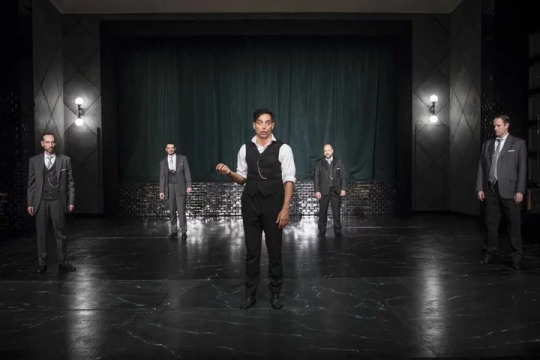
Joaquín Furriel en “Hamlet”
Actor protagónico drama y/o comedia dramática
Boy Olmi – Colaboración / Tomar partido Guillermo Angelelli – Edipo Rey Joaquín Furriel – Hamlet Jorge Suárez – Después de Casa de Muñecas Osmar Nuñez – Colaboración / Tomar partido Puma Goity – Las benévolas
Directora / director drama y /o comedia dramática
Carla Calabrese – El curioso incidente del perro a medianoche Javier Daulte – Valeria radioactiva Juan Pablo Gómez – Un domingo en familia Marcelo Lombardero – Colaboración / Tomar partido Piel de lava y Laura Fernández – Petróleo Rubén Szchumacher – Hamlet

Elenco de “Una Semana Nada Más”
Comedia
100 metros cuadrados – Juan Carlos Rubio (Multitabaris/Multiteatro COMAFI) Departamento de soltero (Lola Membrives) La verdad – Florian Zeller (La Plaza) Mucho ruido y pocas nueces – William Shakespeare (La Comedia) Terapia amorosa – Daniel Glattauer (Picadero) Una semana nada más – Clément Michel (Nacional Sancor Seguros)

“Terapia Amorosa” junto a Benjamín Vicuña, Violeta Urtizberea y Fernán Mirás
Actriz protagónica de comedia
Florencia Bertotti - 100 metros cuadrados Jorgelina Aruzzi – La verdad Laurita Fernández – Departamento de soltero María Rosa Fugazot – La Ratonera María Valenzuela – 100 metros cuadrados Verónica Llinas – Carcajada salvaje
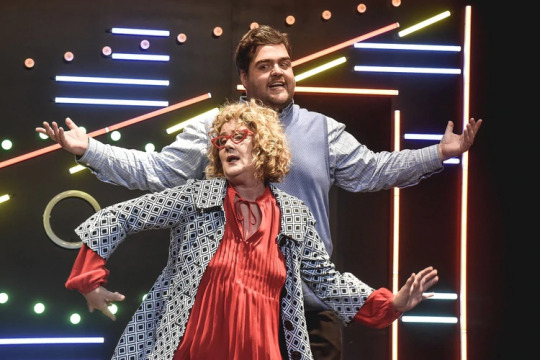
Verónica Llinás y Darío Barassi en “Carcajada salvaje”
Actor protagónico de comedia
Benjamín Vicuña – Terapia amorosa Diego Barassi – Carcajada Salvaje Fernán Mirás – Terapia amorosa Juan Minujin – La verdad Nicolás Vazquez – Una semana nada más Nicolás Cabré – Departamento de soltero
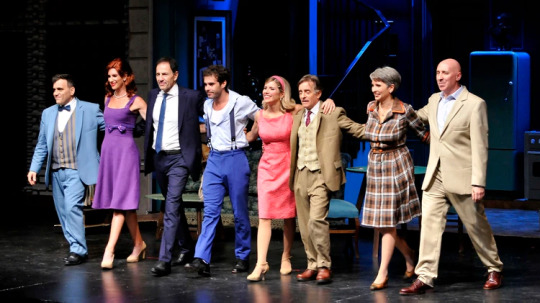
Elenco de “Departamento de soltero”
Directora / director de comedia
Ciro Zorzoli – La verdad Daniel Veronese – Departamento de soltero Daniel Veronese – Terapia amorosa Jorge Azurmendi – Mucho ruido y pocas nueces Manuel González Gil – 100 metros cuadrados Mariano Demaria – Una semana nada mas
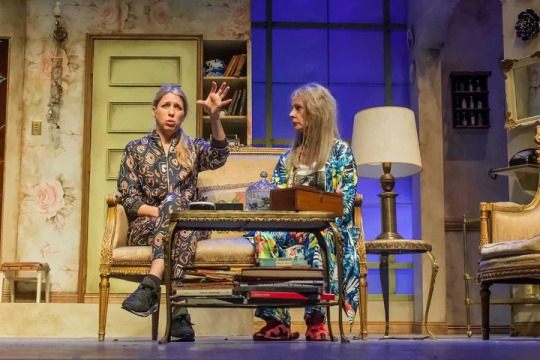
María Valenzuela y Florencia Bertotti en “100 Metros Cuadrados”
Actriz y Actor de reparto drama/ comedia dramática y /o comedia
Claudio Da Passano – Hamlet Héctor Diáz – La verdad Iride Mocker – Madre Coraje Julia Calvo – Después de Casa de Muñecas Melania Lenoir – El curioso incidente del perro a medianoche Sebastian Holz – Colaboración /Tomar partido
Actriz en obra para un solo personaje
Ana Padilla – Nina de Patricia Suárez (Hasta Trilce) Deborah Turza – Mar Oculto de Agustín León Pruzzo (Estudios Caracol) María Onetto – Potestad de Eduardo Pavlovsky (Caras y Caretas) Melina Petriella – Como si la vida fuese un momento pacífico y estable …de Dardo Dozo (Timbre 4) Paula Ransenberg – Juicio a una Zorra de Miguel del Arco (Timbre 4) Stella Matute – Gertrudis de Fernando Musante (La Comedia)
Actor en obra para un solo personaje
Enrique Pinti – Al fondo a la derecha (Multieatro COMAFI) Juan Pablo Gerettto – Estrella (Camarin de las musas) Mateo Chiarino – Nuremberg de Santiago Sanguinetti (Opalo) Mauricio Dayub – El equilibrista de Patricio Abadi, Mariano Saba y Mauricio Dayub (Chacarerean) Pablo Mariuzzi – Un señor alto, rubio de bigotes de Humberto Constantini (El Crisol)

Florencia Peña y Mike Amigorena en “Cabaret”
Musical
Cabaret – Joe Masteroff, John Kander, Fred Ebb (Liceo) Camarera – Jessie Nelson y Sara Bareilles adaptación de la película (Metropolitan Sura) Chorus Line – Marvin Hamlisch y Edward Kleban, James Kirkwood y Nicholas Dante (Maipo – Metropolitan Sura) Desencantadas – Dennis T. Giacino (Regina) Hair – Gerome Ragni, James Rado y Galt Macdermont (Ciudad cultural Konex) Una vez en la vida – Enda Walsh- Glen Hansard & Markéta Irgloá – John Carney (Metropolitan Sura)
Music hall y /o Café concert
Airefuego – Thelma Biral y Francisco Pesqueira (Maipo Kabaret) Aire familiar – Cristina Banegas /Nelly Prince (El excéntrico de las 18) A la izquierda del roble – Pacho O'Donnell (CCC) De eso no se canta – Pablo Gorlero (La comedia) Eladia – Susan Ferrer (Maipo Kabaret) Lo que se me canta – Andrés Ini (Maipo Kabaret)
Actriz en Musical, Music hall y o Café concert
Alejandra Perlusky – Cabaret Graciela Pal – Cabaret Florencia Peña – Cabaret Josefina Scaglione – Camarera Natalia Cociuffo – Camarera Paula Reca – Una vez en la vida
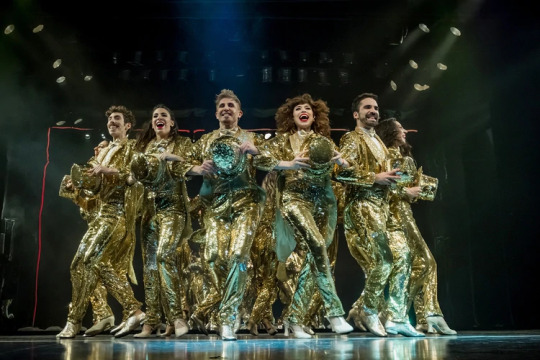
Parte del elenco de “Chorus Line”
Actor en Musical, Music hall y /o Café concert
Eliseo Barrionuevo – Una vez en la vida Gustavo Wons – Chorus line Juan Rodo – Los fantastickos Mike Amigorena – Cabaret Omar Calicchio – Hotel Neurotik Roberto Peloni – Camarera
Directora/ Director general de Musical, Music Hall y/o Café concert
Alberto Negrin – Cabaret Claudio Tolcachir – Cabaret Julio Panno – Una vez en la vida Natalia del Castillo – Camarera Pablo Gorlero – Hair Ricky Pashkus – Chorus Line
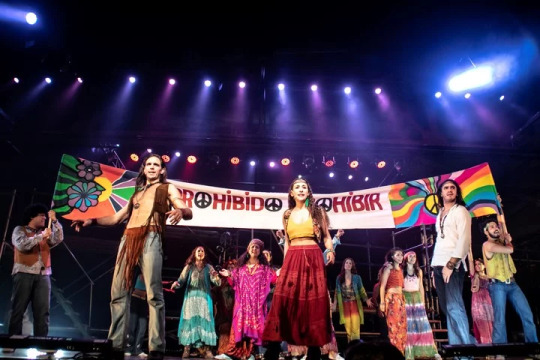
“Hair, el musical”
Directora /director musical
Gaspar Scabuzzo – Chorus Line Gerardo Gardelin – Cabaret Juan Ignacio López – Hair Mariana Zayas – Camarera Martin Rodriguez – Recuerdos a la hora de la siesta Tomas Mayer, Wolf – Una vez en la vida
Espectáculo teatro alternativo
Absurdo criollo – Marcos Arano y Gabriel Graves (El extranjero) Amor de película – Héctor Díaz (Espacio Callejón) Creo en un solo dios – Stefano Massini (Payro /Num) El lindo Don Diego – Agustín Moreto (CCC) 7 La naranja mecánica – Anthony Burgess versión Manuel González Gil (Método Kairos) La reina de la belleza – Martin McDonagh (El tinglado)
Actriz teatro alternativo
Ana Yovino – El lindo don Diego Antonia Bengoechea – Creo en un solo Dios Irene Almus – El lindo Don Diego María Onetto – Valeria radioactiva Marta Lubos – La reina de la belleza María Inés Sancerni – Amor de película
Actor teatro alternativo
Arturo Bonin – Un instante sin Dios Cutuli – Rey Lear Francisco Pesqueira – El lindo Don Diego Gerardo Chendo – Amor de Película Pablo Mariuzzi – La reina de la belleza Tomás Kirzner – La naranja mecánica
Directora/ director teatro alternativo
Alfredo Martin – La vida puerca César Brie – El equilibrista Edgardo El Negro Millán – Creo en un solo Dios Lisandro Fiks y Gustavo Luppi – Hombres y ratones Oscar Barney Finn – La reina de la belleza Santiago Doria – El lindo don Diego
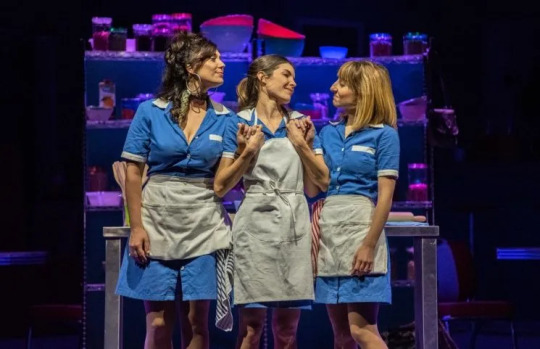
“Camarera”con Natalia Cocciuffo, Josefina Scaglione y Maida Andrenacci
Coreografía
Alejandro Ibarra – Recuerdos a la hora de la siesta Gustavo Wons – Cabaret Gustavo Wons – Chorus Line Nina Iraolagoitia – Camarera Verónica Pecollo – Hair Verónica Pecollo – Una vez en la vida
Escenografía
Alberto Negrin – Cabaret Jorge Ferrari – Hamlet Gastón Joubert – Colaboración /Tomar partido Gonzalo Córdoba Estevez – Recuerdos a la hora de la siesta Tato Fernández – Una vez en la vida Tadeo Jones – El curioso incidente del perro a medianoche
Iluminación
Eli Sirlin – Departamento de Soltero Gonzalo González – El curioso incidente del perro a medianoche Horacio Efrón – Colaboración /Tomar partido Leo Muñoz / Julio Panno – Una vez en la vida Marcelo Cuervo – Chorus Line Mariano Demaría – Cabaret
Música original
Gerardo Gardelin – El lindo Don Diego Martín Bianchedi – La naranja mecánica Martín Rodriguez – Recuerdos a la hora de la siesta Pablo Brie – El equilibrista Roni Keselman – Nina Willie Lorenzo y Flor Bertotti – 100 metros cuadrados

Boy Olmi como Stefan Zweig y Osmar Núñez como Richard Strauss en "Colaboración"
Vestuario
Ana Markarian – Después de Casa de Muñecas Luciana Gutman – Colaboración /Tomar partido Marisol Castañeda – Recuerdos a la hora de la siesta Maydée Arigós – El lindo Don Diego Renata Schussheim – Cabaret Renata Schussheim – Hair
Infantil
El Dr. Fausto – La Banda de la risa adaptación y dirección Claudio Gallardou (Picadero) Huesito caracú – Hugo Midon y Carlos Gianni (Picadero) La gran farándula – Gastón Marioni (25 de Mayo) Musiquitas – Jorge Maestro y Sergio Vainman (25 de Mayo) Recuerdos a la hora de la siesta – Emiliano Dionisi y Martin Rodriguez (CTBA) Yatencontraré – Daniel Casablanca y Guadalupe Bervi (CCC)
Revelación femenina
Belén Ucar – Hair Laura Grandinetti – Después de Casa de Muñecas Mariel Percossi – Hair
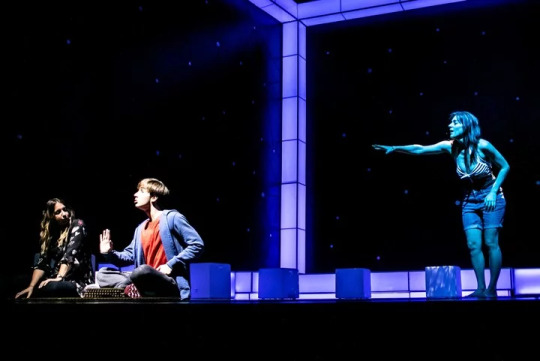
"El curioso incidente del perro a medianoche"
Revelación masculina
Agustin Iannone – Hair Iñaqui Aldao – El curioso incidente del perro a medianoche Nicolás Cúcaro – Hair y De eso no se canta Ramiro Méndez Roy – Hombres y ratones
Producción
Adrián Suar, Nacho Laviaguerre y Preludio Producciones – Una semana nada más El Tío Caracoles – Teatro Regina – Desencantadas Gustavo Yankelevich para RGB Entertainment – Cabaret Javier Faroni – Chorus Line Julieta Kalik y Del Campo Global – Una vez en la vida y Camarera Pablo Kompel – Después de Casa de Muñecas The Stage Company – El curioso incidente del perro a medianoche
6 notes
·
View notes
Text
Make it REAL: It’s time to talk about environmental communication

In the year 2085, Earth has become an endless desert. Nature is scarce, and animals are extinct. Overpopulation has caused the end of water and food. A deadly virus sterilizes humans. The air is thick and polluted. Humanity’s time is up. The last human survivors accept a mysterious call to meet in the Acropolis in Athens, Greece, where they will share the last moments of human civilization. Santiago Amigorena’s novel “Mes Derniers Mots” (My Last Words) does not only describe a dystopia. It narrates how humans got disconnected from nature and eventually self-destructed.
Let’s face it. We are not far from this dire future that Amigorena describes. Our planet is in big trouble and we are still fighting over micropolitics, war, economic domination, tech brands, sports clubs, and mobile apps. Humanity’s impact on the environment is dreadfully harmful. Our everyday actions, ignorance, indifference, and selfishness destroy habitats and endanger the lives of future generations. Even worse is that we are not joining forces to do something about it. In an article posted on Medium, Amber Butler (2018) writes that
“a major reason why the American society loves to ignore environmental issues is due to the dominant social paradigm, which basically “affirms” the belief that humans are superior to nature and they have the right to do whatever they want with any natural resource. This is largely demonstrated through our market economy and how our country is dominated by consumer culture.” Spot on!
Ove Hoegh-Guldberg, director of the Global Change Institute at the University of Queensland, St. Lucia, in Brisbane, Australia, warns that all coral reefs will be extinct by 2040 while recent scientific research predicts that 90 percent of coral reefs will be in extinction by 2030 (Leung, 2019). This is just 10 years from today!

Aerial surveys in late March of the Great Barrier Reef have revealed “by far” the most widespread bleaching event to be recorded on the reef, researchers say (Science News, 2020).
It’s time to start talking about feasible ways to reverse our home’s destruction. Nothing to leave for later. The signs are way too many to ignore. The bleaching of the Great Barrier Reef, Amazon’s deforestation, the rapid glacier melt, the increasing water acidity which comes as a result of air pollution, the ozone layer depletion, which results in more UVB radiation reaching the Earth’s surface are some of the planet’s open wounds. The list is endless as we managed to pollute the air, water, and soil. The whole ecosystem is affected, and people act as if they are not part of it, believing that climate change is a hoax. Climate change is real, and we refuse to do anything to stop it.
Numbers don’t lie
Food production and natural resources are interlinked. Overpopulation and the unequal distribution of food and other natural resources drain the planet. Research by Hannah Ritchie and Max Roser (2020) on food, agriculture, and the environment reveals some stunning results:
· Food accounts for over a quarter (26%) of global greenhouse gas emissions (Poore and Nemecek, 2019);
· Half of the world’s habitable (ice- and desert-free) land is used for agriculture;
· 70% of global freshwater withdrawals are used for agriculture (FAO, 2011);
· 78% of global ocean and freshwater eutrophication (the pollution of waterways with nutrient-rich pollutants) is caused by agriculture (Poore and Nemecek, 2019);
· 94% of mammal biomass (excluding humans) is livestock. This means livestock outweigh wild mammals by a factor of 15-to-1 (Bar-On, Phillips, and Milo, 2018).
· Of the 28,000 species evaluated to be threatened with extinction on the IUCN Red List, agriculture and aquaculture is listed as a threat for 24,000 of them (IUCN Red List, Summary Statistics); In 2019, 28,338 were listed as threatened with extinction, and 24,001 species were threatened by ‘agriculture and aquaculture,’ which is are two of the many threats for such species.

Environmental impacts of food production by Ritchie and Roser(2020).
Climate Change: A mild term for a severe condition
How could anyone deny that our environment is changing? Research studies, news reports, documentary films, industry experts, concerned citizens all cry for help to reduce water stress and pollution. Our generation must fight to restore lands back to forests and grasslands and protect the world’s wildlife. Climate change is happening, and its effect on life is already visible.
The term “climate change” does not communicate the urgency of the situation. The term is too mild for the general audience to realize why it deserves our full attention. The term Climate Crisis better explains the current condition. I am not an environmental expert. I can’t write about climate change scientifically. What I can do is call for attention to our biggest environmental problems our planet is facing today. Among the many things we have to do to reverse climate change, organizations should shift their narrative to environmental communication.
Dr. Gavin Lamb, researcher and writer in environmental communication based in Hawaii, has written a Beginner’s Guide To Environmental Communication on Medium. Gavin Lamb (2020) writes that environmental communication is “something everyone does, whether we’re talking about the weather with a friend, using photographs to promote an environmental issue we care about, testifying at a public hearing against a new fracking contract, or waving a protest sign at a climate strike.” As a professional practice, “People make a living doing environmental communication as writers, photographers, campaign organizers, lobbyists, and documentary film-makers, and corporate ‘sustainability’ positions created by professional communicators.” Finally, Lamb defines environmental communication as a field of academic research that explores people’s knowledge and behavior toward the planet.
Today, people’s opinion and understanding of the environment seems so divisive as never before. Social media amplified the voices of both sides to the extent that a listener becomes dazed and confused. Initiatives such as the Earth Hour and Earth Day serve no purpose. Raising awareness for a day is not enough. Our planet requires much more than short-term campaigns and advertising slogans. I dare to write that some Corporate Social Responsibility (CSR) campaigns about the environment have minimal impact. Organizations need to revise their strategies to embrace environmental communication with a long-term vision.
Environmental communication deals with environmental affairs. Advocates of environmental communication are people actively participating in the public dialogue about the environment. Mark Meisner (2015), executive director of the International Environmental Communication Association IECA, writes:
“Whether you are using environmental communication to advocate for a policy, raise awareness, change behavior, influence public opinion, collaborate to address conflicts, pass legislation or challenge assumptions, how you communicate will affect your outcomes. Whether you seek technological, political, economic, behavioral, or cultural solutions, you need effective communication to succeed” (p. 2).
Make it REAL
As we need to focus our communication rhetoric on nature and environmental affairs, I propose the REAL model: Read, Educate, Act, Learn. It is not only a matter of teachers discussing these matters in schools. The situation calls for urgent and multilevel actions today! We should fight for better organizational policies, AI technologies that find solutions to crucial environmental issues such as smart agriculture, alternative energy sources, sustainable living, and environment-friendly lifestyles. The last one is the most important. We must change our priorities and find a new purpose in life. As organizations seek value in their offerings and practices, environmental communication offers solutions.
Scalable new technologies and nature-based solutions will enable us all to leapfrog to a cleaner, more resilient world. If governments, businesses, civil society, youth, and academia work together, we can create a green future where suffering is diminished, justice is upheld, and harmony is restored between people and planet (United Nations, 2020).
This is a call for both humans and organizations to re-define their purpose and “determine the fate of humanity and the quality of life enjoyed by current and future generations,” as the Institute of Sustainable Communication writes on the official website. Brands should be built around a higher purpose to become environmental communication advocates. Sustainability is a challenging issue that requires human communication and collaboration on multiple levels and industries. From individuals to countries, aiming for sustainable and not greenwashing solutions is a win-win solution to make it REAL!
There is always hope
In Amigorena’s novel “Mes Derniers Mots,” the main character Bellarmine whispers his last words “This world is wonderful… The universe is a hymn to joy.” This is so true. Earth is not helpless. We are not helpless, either. Our planet can heal its wounds if we realize that we are part of a larger ecosystem that requires our respect. Let’s pause and stare at the stars to appreciate the beauty in the universe. We do not need to experience the planet’s last days to realize it.
Below are some suggestions for websites, books, university programs, associations, organizations, and documentary films that embrace the REAL model. The below list is not exhaustive. Any suggestions to review and enrich the list are welcome.
READ
Websites
Earth.org
Earther
Earth Day Network
Earthsight
The New Food Economy — Environment
Bloomberg’s Climate Changed
The Texas Tribune — Environment
The Guardian — Environment
Earthfix
The Gecko Project
Climate Feedback
Inside Climate News
Thomson Reuters Foundation News — Climate
Books (as suggested by The New York Times)
The Death and Life of the Great Lakes | Dan Egan
Since their settlement in the 1800s, the Great Lakes have undergone a destructive transformation by pollution and invasive species, the latter a byproduct of various engineering feats throughout the 20th century.
What We Know About Climate Change by Kerry Emanuel
An MIT climatologist and a conservative, Emanuel sounds the alarm in a measured and scientifically sound way, making clear what we know and what we don’t know. There is little panic in this slender book, but there is a lot of troubling information.
The End of Nature by Bill McKibben
McKibben wrote this book in 1989 when global warming was still referred to with the more innocuous-sounding phrase “the greenhouse effect.”
The Sixth Extinction by Elizabeth Kolbert
Reporting from the Andes, the Amazon rainforest, the Great Barrier Reef and her own backyard, Kolbert registers the impact of climate change on the life of our planet.
The Drowned World by J.G. Ballard
With its vision of a London swamped by the rising Thames River and a warming planet leading to an urban landscape of lush tropical foliage, Ballard’s dystopian fantasy — written in 1962 — laid the groundwork for generations of climate-change fiction to come.
The Wall by John Lanchester
Lanchester’s novel, published in 2019, elegantly and chillingly imagines how current political attitudes might play out as the repercussions of climate change grow more severe.
Salvage the Bones by Jesmyn Ward
Set in the days leading up to and immediately after Hurricane Katrina, this National Book Award-winning novel follows a black family in Mississippi as it prepares for, and recovers from, disaster.
The Water Will Come by Jeff Goodell
“Sea-level rise is one of the central facts of our time, as real as gravity,” Goodell writes at the start of his book, published in 2017. “It will reshape our world in ways most of us can only dimly imagine.” This book takes us there, to a place where we can picture Miami completely underwater.
New York 2140 by Kim Stanley Robinson
It can be easy to forget that the island of Manhattan is just that, an island — but as rising waters encroach on coastal lands everywhere, life in the city has the potential to change dramatically.
Windfall by McKenzie Funk
In this deeply reported 2014 book, Funk covers the globe to find the stories of those companies and countries that are responding to global warming in the most craven way imaginable.
Weather by Jenny Offill
Lizzie, the narrator of Offill’s latest novel, is a mother who’s juggling fears on multiple levels: concern for her brother, a recovering addict; financial worries; and general apprehension about the direction of the world.
The Madaddam Trilogy by Margaret Atwood
Atwood’s terrifying, though often very funny, series imagines the societal, economic and biological fallout from an ecological disaster right down to glowing rabbits, labs with names like the RejoovenEsense Compound and pseudo-foods called ChickieNobs.
The Fifth Season by NK. Jemisin
This fantasy novel, the first in Jemisin’s astonishing Broken Earth trilogy, imagines social collapse going hand-in-hand with geologic catastrophe on a planet as violent as the people who inhabit it.
The Overstory by Richard Powers
Trees are the real heroes of this Pulitzer Prize-winning novel, a series of interconnected stories that follow characters from 1800s New York to the timber wars of the Pacific Northwest.
Flight Behavior by Barbara Kingsolver
The sudden, unusual appearance of monarch butterflies rattles a rural Tennessee farm town, and a rift soon opens up in the community: Religious residents see the insect swarms as a sign from God, while others are drawn toward scientific explanations.
Our House Is on Fire: Greta Thunberg’s Call to Save the Planet by Jeanette Winter
With charming artwork and straightforward language, this picture book, aimed at children aged 3 to 8, uses the inspiring life story of the young climate activist Greta Thunberg to help kids understand climate change — and to give them a sense of what they can do about it.
The Great Derangement by Amitav Ghosh
Ghosh gets right to the heart of the matter, imagining how our great-grandchildren will view us and offering a disturbing vision: We are deranged. Our inability to deal with a catastrophe we can’t see but know is coming indicates a failure of imagination.
The Story of More by Hope Jahren
Jahren, the author of the acclaimed memoir “Lab Girl,” turns her attention to climate change and specifically the responsibility we each bear for contributing to the problem.
Personal recommendations
This Changes Everything: Capitalism vs. The Climate | Naomi Klein In “This Changes Everything” Naomi Klein argues that climate change isn’t just another issue to be neatly filed between taxes and health care. It’s an alarm that calls us to fix an economic system that is already failing us in many ways. Klein meticulously builds the case for how massively reducing our greenhouse emissions is our best chance to simultaneously reduce gaping inequalities, re-imagine our broken democracies, and rebuild our gutted local economies. She exposes the ideological desperation of the climate-change deniers, the messianic delusions of the would-be geoengineers, and the tragic defeatism of too many mainstream green initiatives. And she demonstrates precisely why the market has not — and cannot — fix the climate crisis but will instead make things worse, with ever more extreme and ecologically damaging extraction methods, accompanied by rampant disaster capitalism.
The Ends of the World | Peter Brannen
Volcanic Apocalypses, Lethal Oceans, and Our Quest to Understand Earth’s Past Mass Extinctions
How to Give Up Plastic | Will McCallum
A Guide to Changing the World, One Plastic Bottle at a Time
Storming the Wall | Todd Miller
Climate Change, Migration, and Homeland Security
The Uninhabitable Earth | David Wallace-Wells
Life After Warming
Losing Earth | Nathaniel Rich
A Recent History of Earth
Don’t Even Think About It | George Marshall
Why Our Brains Are Wired to Ignore Climate Change
Salvage the Bones | Jesmyn Ward
Facts and figures may drive policy, but they rarely stir emotion with the strength that pure human storytelling can do.
Where the Water Goes | David Owen
Life and Death Along the Colorado River
This Radical Land | Daegan Miller
A Natural History of Dissent
Merchants of Doubt | Naomi Oreskes, Erik M. Conway
A story about global warming
Mes Derniers Mots | Santiago Amigorena (No English translation)
What if the last five people on Earth in 2086 had found the key to happiness? Could the human race have survived in some way? The story of astonishing human tenderness faced with a wave of ecological catastrophes. A fiction film based on the book was shown at the 2020 Cannes Film Festival.
EDUCATE
Some universities with a focus on Environmental Communication
Michigan State University, East Lansing, Michigan, Master of Arts in Journalism with a concentration in Environmental, Science, and Health Journalism
Michigan State University, East Lansing, Michigan, Bachelor of Arts in Environmental Journalism
New York University (NYU), New York City, Master of Arts in Science, Health & Environmental Reporting
North Carolina State University, Raleigh, North Carolina, Master of Science in Technical Communication with Elective Clusters in Environmental Communication, and Agricultural Communication
The University of North Carolina at Chapel Hill, North Carolina, Master of Arts in Media and Communication with a Program of Study in Journalism (Several Electives in Environmental Journalism)
The University of Utah, Salt Lake City, Utah, Master’s in Communication with an Area of Emphasis in Communicating Science, Health, Environment, and Risk (CommSHER)
The University of Colorado Boulder, Boulder, Colorado, Master of Arts in Journalism with an Area of Expertise in Environmental Journalism
The University of Minnesota, Minneapolis, Master of Science in Scientific and Technical Communication with a Field Competency Area in Environmental Science
The University of Missouri, Columbia, Missouri, Master of Arts in Journalism with an Emphasis in Environmental Reporting
University of Montana, Missoula, Montana, Master’s in Environmental Science and Natural Resource Journalism
Lehigh University, Bethlehem, Philadelphia, Bachelor of Arts in Science and Environmental Writing
Cape Breton University, Sydney, Nova Scotia, Canada, Bachelor of Arts and Science in Environment
University of Nebraska-Lincoln’s, Lincoln, Nebraska, Bachelor of Science in Agricultural and Environmental Sciences Communication
Swedish University of Agricultural Sciences, Alnarp, Umeå and Uppsala, Sweden, Masters in Environmental Communication and Management
SUNY College of Environmental Science and Forestry, Syracuse, New York, MS in Environmental Communication
The University of Rhode Island, Kingston, RI, Environmental Communication track in the MESM program
Marquette University, Milwaukee, Wisconsin, Health, Science, and Environmental Communication
Cornell University, Ithaca, New York, Department of Communication offers opportunities for undergraduates and graduates in environmental, science, and health communication
Columbia University, New York, NY, Master of Arts degree program with a specialization in science journalism.
The University of California, Santa Cruz, CA, Science Communication Program
The University of Glasgow, UK, Environment Culture and Communication
Professional Resources and Associations in Environmental Communication
The Society of Environmental Journalists (SEJ)
The International Environmental Communication Association (IECA)
The National Communication Association’s Environmental Communication Division (NCA)
The Earth Journalism Network (EJN)
The North American Association for Environmental Education (NAAEE)
ACT
World Wildfire Fund (WWF): With 5 million members internationally and over 1.2 million in the States, this 45-year-old wildlife defense organization promotes science to preserve nature and its creatures.
Greenpeace: With over 2.5 million members worldwide, Greenpeace began in 1971 when activists put themselves directly in harm’s way to protest nuclear testing off the coast of Alaska. Among many actions, the organization has helped to stop whaling, nuclear testing, and leading efforts to protect Antarctica.
Chasing Coral: A continuation of an amazing documentary film, directed by Jeff Orlowski, goes beyond the screening and calls for action.
Sierra Club: Founded in 1892, it is one of the oldest conservation organizations in existence. With over 1.3 million members, this organization is one of the most effective and powerful at effecting changes in government and corporate America.
Natural Resources Defense Council (NRDC): “The Natural Resources Defense Council works to protect wildlife and wild places and to ensure a healthy environment for all life on earth.” The NRDC combines hundreds of active lawyers with over 1.2 million members to create direct and legislative change.
1% For The Planet: With nearly 1,000 firms and companies now participating, 1% is helping corporate interests green their bottom lines by giving back to environmental causes.
The Unstoppable Schools Project: Chasing Coral’s Unstoppable Schools Project is a project-based learning curriculum designed for middle and high school students and challenges students to work in the style of the Chasing Coral production team: diving into complex, autonomous research according to their own curiosities and embarking on the creative expression of their discoveries.
LEARN
As we become visual learners, my suggestions will limit themselves to some recommended documentary films produced in the last 20 years. All descriptions are taken from IMDB.com.
FOOD INC. (2008): An unflattering look inside America’s corporate controlled food industry. This is a must-watch if you want to make more environmentally conscious eating choices.
NO IMPACT MAN (2009): Follow the Manhattan-based Beavan family as they abandon their high consumption 5th Avenue lifestyle and try to live a year while making no net environmental impact. Colin Beavan decides to radically reduce his carbon footprint for a year, foregoing packaging, non-local foods, gas-powered transportation, disposable diapers for his daughter, and even electricity.
CHASING ICE (2012): Follow National Geographic photographer James Balog across the Arctic as he deploys time-lapse cameras designed for one purpose: to capture a multi-year record of the world’s changing glaciers.
VIRUNGA (2014): A team of brave individuals risks their lives to protect the last mountain gorillas.
RACING EXTINCTION (2015): A documentary follows undercover activists trying to stave off a man-made mass extinction.
TOMORROW (2015): The world “s climate is changing. Instead of showing the worst that can happen, this documentary focuses on the people suggesting solutions and their actions.
YEARS OF LIVING DANGEROUSLY (2014, 2016): From the damage wrought by Hurricane Sandy to the upheaval caused by drought in the Middle East, this groundbreaking documentary event series provides first-hand reports on those affected by, and seeking solutions to, climate change.
BEFORE THE FLOOD (2016): A look at how climate change affects our environment and what society can do to prevent the demise of endangered species, ecosystems, and native communities across the planet.
CHASING CORAL (2017): Coral reefs around the world are vanishing at an unprecedented rate. A team of divers, photographers, and scientists set out on a thrilling ocean adventure to discover why and to reveal the underwater mystery to the world.
THE HUMAN ELEMENT (2019): Human activity has now surpassed all other forces shaping our world. Balog’s work has challenged us to contemplate our place in, and responsibility to, the natural world. Balog investigates how altering the elements is in turn affecting everyday Americans right now. The Human Element features subjects who are often overlooked victims of climate change.
OUR PLANET (2019): Documentary series focusing on the breadth of the diversity of habitats around the world, from the remote Arctic wilderness and mysterious deep oceans to the vast landscapes of Africa and diverse jungles of South America.
0 notes